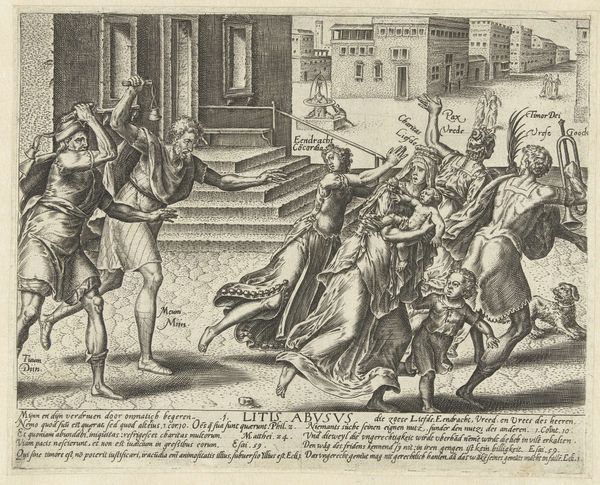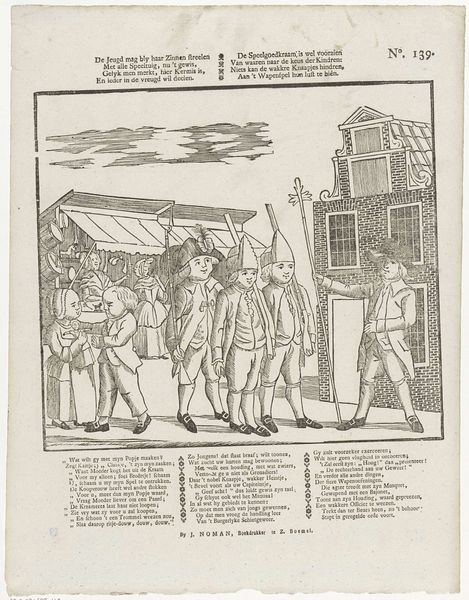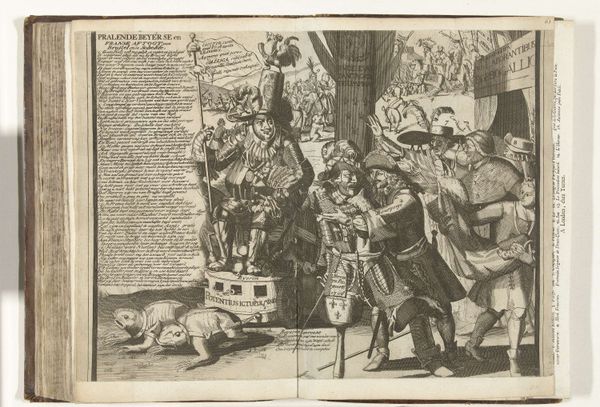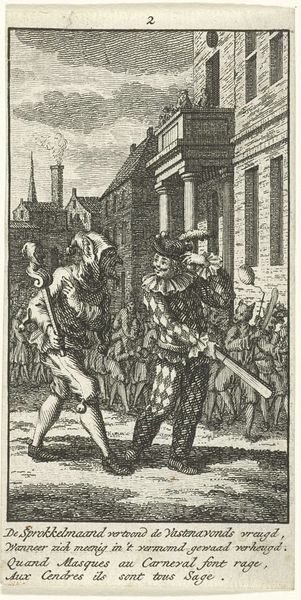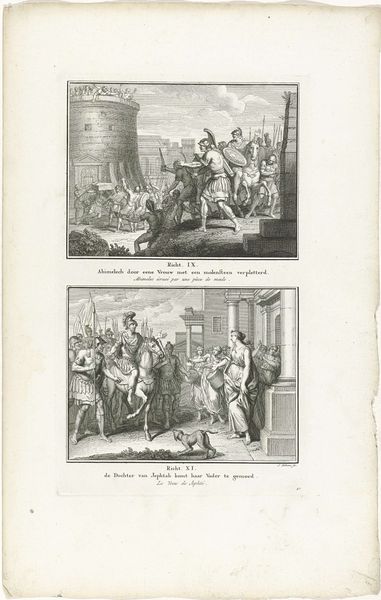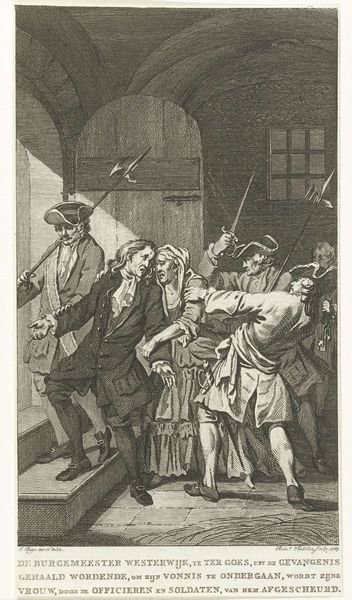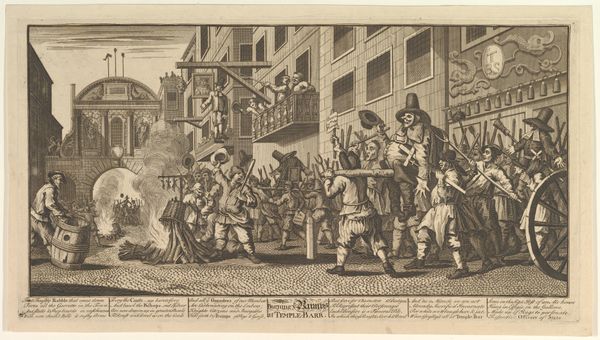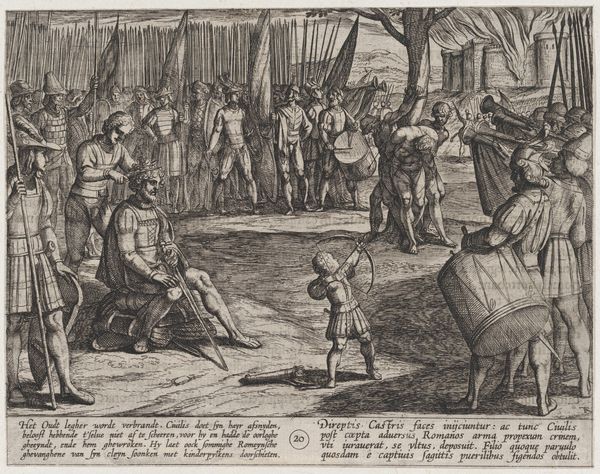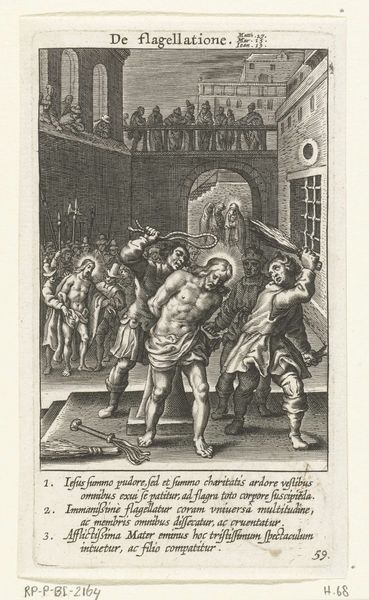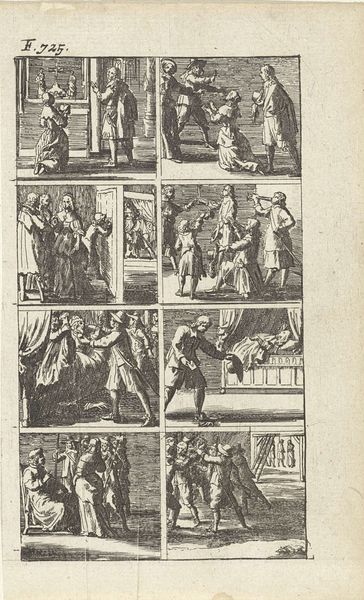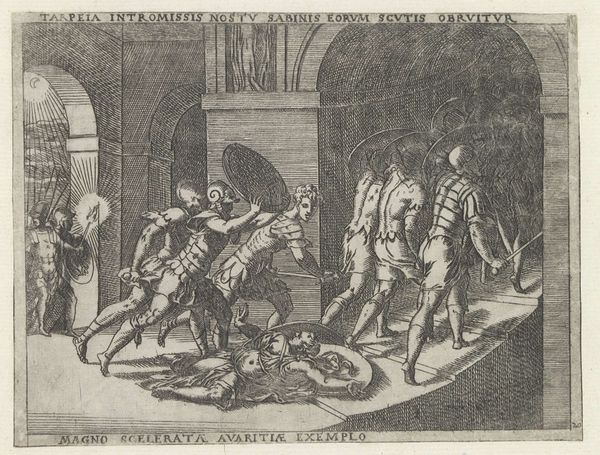
print, engraving
#
narrative-art
#
baroque
#
dutch-golden-age
# print
#
old engraving style
#
traditional media
#
limited contrast and shading
#
history-painting
#
engraving
Dimensions: height 186 mm, width 146 mm
Copyright: Rijks Museum: Open Domain
Editor: This engraving, titled "Moord op Doreslaer, 1649," from around 1696-1700, depicts a rather violent scene. The Baroque aesthetic is visible in its dynamism and the dramatic flair, and it seems almost theatrical. What underlying symbolic tensions were at play here? Curator: Indeed! Looking at this piece, one is struck by how the composition uses the architectural elements – those stark lines of the walls – to box in and intensify the central conflict. Beyond a mere depiction of violence, I see a visual articulation of power. What cultural assumptions about justice, retribution, and even class, do you think were being made, both by the original artist and audience, and the audience today? Editor: I suppose they thought about justice as a very swift, decisive action. Today, it's all about trials and due process, which stands in stark contrast to the instantaneous and brutal justice shown here. The composition is interesting, focusing primarily on chaos instead of individual expressions. What else can we glean about the psychology of violence here? Curator: The violence is not merely physical, but also a symbolic disruption of order. Think about the table being overturned: it's not just a domestic item; in that setting, it is symbolic of domestic authority. Is there also, do you think, something conveyed through the anonymity of the attackers, faceless and armored? Editor: The armor absolutely dehumanizes them, masking their individual motivations and making them almost extensions of a collective will. This has been quite enlightening; it's much more than just a depiction of violence; it reflects how cultural values shape and perceive violent acts. Curator: Precisely! It shows how potent visual symbols can be in perpetuating and questioning existing ideologies and perceptions. I also am struck at how important architecture is to interpreting the narrative itself.
Comments
No comments
Be the first to comment and join the conversation on the ultimate creative platform.
